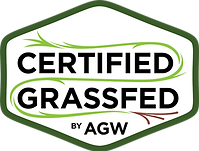Our animals
High welfare, pasture fed livestock



Extensive grazing is essential to conserve the archaeological features of the farm and maintain its wildlife habitats, so the care for our livestock is at the heart of our work.
Cattle, sheep and ponies all graze in different ways and their activities maintain a diverse range of habitats which are important for many rare species of flowers, birds and other wildlife. Cattle graze using their rough tongues to wrap around and tear up vegetation, will eat coarse long grasses and so are particularly good at grazing our marshy areas and creating tussocky grass. Being heavier than the sheep they can push their way through scrub and get into rougher and wetter areas, opening it up and creating niches for wildlife to colonise. Sheep are nibblers, nipping grass off quite tightly and creating lawns, this can be great for fungi such as waxcaps. Much of the farm is scheduled as an Ancient Monument and without livestock grazing, features such as the medieval strip lynchets (the terraces on the hillsides) and the tin mining remains would become hidden and damaged by encroaching gorse, bracken and other scrub.
Challacombe is accredited Grass Fed and Animal Welfare Approved by A Greener World – this means our livestock only eat grass or grass products, never food, such as cereals, that could be eaten by humans. This pasture-based system means that our animals have access to grazing all year, with hay or haylage made on the farm being fed to them in winter when it is cold and wet to supplement their diets.
Challacombe Farm was the first upland farm in England to become Certified Animal Welfare Approved by A Greener World (AGW) for beef cattle and sheep. One of a portfolio of leading farm certifications offered by the respected international certifier, A Greener World, the Certified Animal Welfare Approved (AWA) by AGW label verifies that animals are raised outdoors on pasture or range in accordance with world-renowned welfare standards using sustainable agriculture methods on an independent farm.


